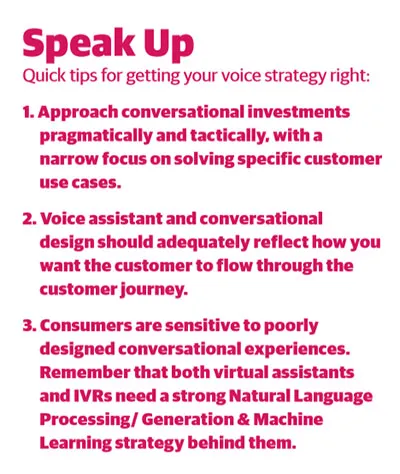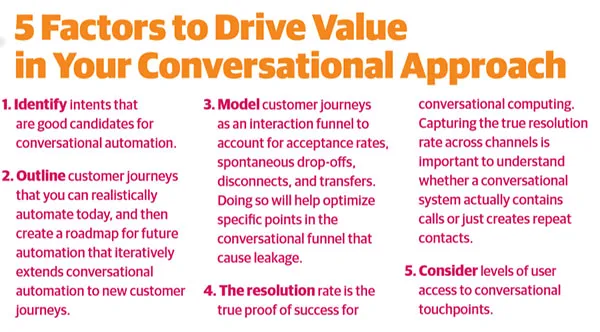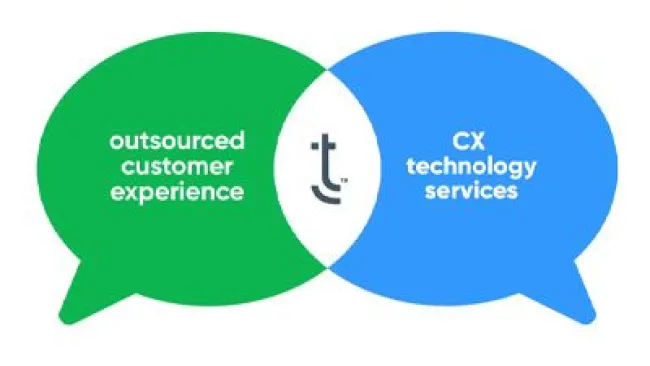Many customer experience professionals ponder whether the contact center voice channel is dying. The fact is it’s far from becoming obsolete–it’s simply evolving. Those in customer experience and contact center leadership roles are in constant search of ways to mitigate call volume and deflect to lower-cost channels while still providing voice options when warranted. It’s a careful balancing act to leverage cost-effective methodologies while curating a customer-centric journey. It’s why investments in your voice strategy are crucial.
The reality of service offerings is that people still crave human-to-human communication. Voice-of-the-consumer studies show overwhelming evidence that consumers are increasingly comfortable with digital interfaces. So when it comes to voice, what’s worth paying attention to and where should investments be made?
Evolving customer expectations
It is incredibly important to understand innovations in the voice space and what your voice strategy for the future should ideally look like.
When Apple’s Siri came out in 2011, it was more of a novelty than an actual, functional tool. A nifty electronic encyclopedia, if you will. Since then, voice assistance has grown to become an integral part of everyday interactions. In 2019, The Verge reported that Amazon had sold over 100 million Alexa devices. That’s equal to roughly a third of the population in the U.S.
Consumers have grown significantly more comfortable with posing questions to digital touchpoints that are more specific and conversational in nature. Through quick and growing adoption of interfaces such as Alexa and Siri, consumers are becoming accustomed to natural language access to service and more intuitive experiences across digital touchpoints. ComScore predicts that 50 percent of searches will be voice-based by 2020 and a report from Juniper Research estimates that 55 percent of U.S. households will have a smart speaker by 2022, showing that organizations need to be prepared to serve their customers in this space. Customers are ready for a different way to access customer service.
Over the last decade, voice assistance technology has matured into a resource where consumers can easily interact with brands on the go and as a tool where consumers turn to get their questions answered, even for more complicated problems such as, “How much money do I need to retire” or “Which laptop should I buy?” Voice assistance has quickly gone from an alternative platform to the primary platform for support. And organizations that want to stay ahead need to catch up to this conversational approach to support customer support.
Still not convinced in the conversational approach? Amazon, Apple, and Google are investing billions to make voice recognition the main way we communicate with the internet and IoT. Loup Ventures estimates that the tech giants are spending a combined 10 percent of their annual research-and-development budgets—more than $5 billion in total—on voice recognition. With rapid adoption of virtual assistants and significant investments going into new iterations of the technology, contact centers need to understand how to leverage voice assistance as a modern age voice offering alongside Interactive Voice Response (IVR).
IVR for the modern consumer
The traditional IVR approach can sometimes be outdated, complicated, and frustrating. Many organizations find that the IVR and other areas of voice are the last to get budget allocation, with the large push on omnichannel. Many organizations think they have an advanced IVR, but traditional systems don’t leverage natural language processing muscle (NLP) or any voice commands. Rather, they are just call menus that collect customer information using alphanumeric inputs on the keypad, largely known as an auto attendant. The IVR is the customer’s greeter, the first thing customers interface with as they try to get an answer. And the way many organizations and IVRs greet customers is currently quite poor.
Human communication has proven to be incredibly meaningful to customer relationships during tense and emotional issues that need solving. But when the path to get there is riddled with trap doors and tension, the customer can grow more frustrated by the second. Traditional IVRs can be excruciatingly painful to navigate through, as many were not designed with customer-centric best practices, but rather as a means of call routing or deflection. It is no wonder that upwards of 60 percent of callers will bypass IVR to reach voice, according to NICE.

Similar findings from NICE show that 82 percent of consumers are dissatisfied with IVR, indicating that it’s time for contact centers to meet modern expectations. With consumers already comfortable with having conversations with digital touchpoints, these voice technologies will become a critical component for meeting the needs of customers. Numerous studies have found that voice commands, not keyboards or phone screens, are the most common way to get information. Soon, it will be the way customers expect to receive support and service.
Next-generation voice strategy
In a Fortune interview, Rohit Prasad, Amazon’s head scientist for Alexa said, “We wanted to remove friction for our customers, and the most natural means was voice.” Devices like Alexa perfectly fit the modern expectations customers have. They want results on the go, when they want it, where they want it.
Contact centers need to be ready to meet this demand. Voice assistants provide a fantastic interface to collect customer information, leverage that information for a personalized experience, and route the call quickly and accurately—just like a strong IVR. But even if you’re not ready to deploy AI assistants, there are some key approaches for leveraging new voice technologies to modernize the experience for today’s customer:
- Provide context continuity by preserving context across channels and personalizing the customer experience.
- Predict customer intent based on recent transactions.
- Adapt to each caller’s experience level in dealing with conversational digital touchpoints and cater to their needs.
- Call them before they call you. Proactively send notifications and reminders.
- Go digital and consider whether mobile IVR solutions, including visual IVR and Text2IVR, will help deliver a frictionless experience.
- Eliminate hold times with a queue management system. Consider services like self-service queuing and courtesy/scheduled callbacks.
- Leverage voice assistants to gather customer information and route calls.
Many of these recommendations require conversational solutions to drive proactive outreach, automation, and voice assistants. And a conversational approach will only be as strong as its NLP muscle. NLP is one technology that leverages AI and machine learning to understand the natural way humans speak, and to expand its own intelligence with each interaction. Your voice strategy and conversational design should always start with NLP.

NPC is the ability for a computer to understand and interpret human language. A pillar of artificial intelligence, This tool helps take highly complex and diverse human languages (in the way we speak) and turns it into textual data for the computer to manipulate. NLP, like most technologies, is evolving and improving continuously. Any team leveraging a conversational approach must stay on top of their NLP and speech recognition strategy.
Voice strategy is ripe for change
There are use cases for just about every vertical, but healthcare, finance, insurance, and e-commerce are four industries that are already leading the charge with advanced voice adoption and offerings. Leveraging artificial intelligence, insurance firms are piloting automated insurance agents, data-mining capabilities, and image and speech recognition to offer their members quick access to quotes and personalized advice on insurance products and coverage, for example.
The traditional IVR is not long for the modern contact center. However, voice assistants and Alexa-type devices aren’t the end-all, be-all customer service solution for the foreseeable future either. A marriage of voice assistance and modernization techniques can help organizations create a roadmap to bring their voice assistance up to the standards of today’s customers.















